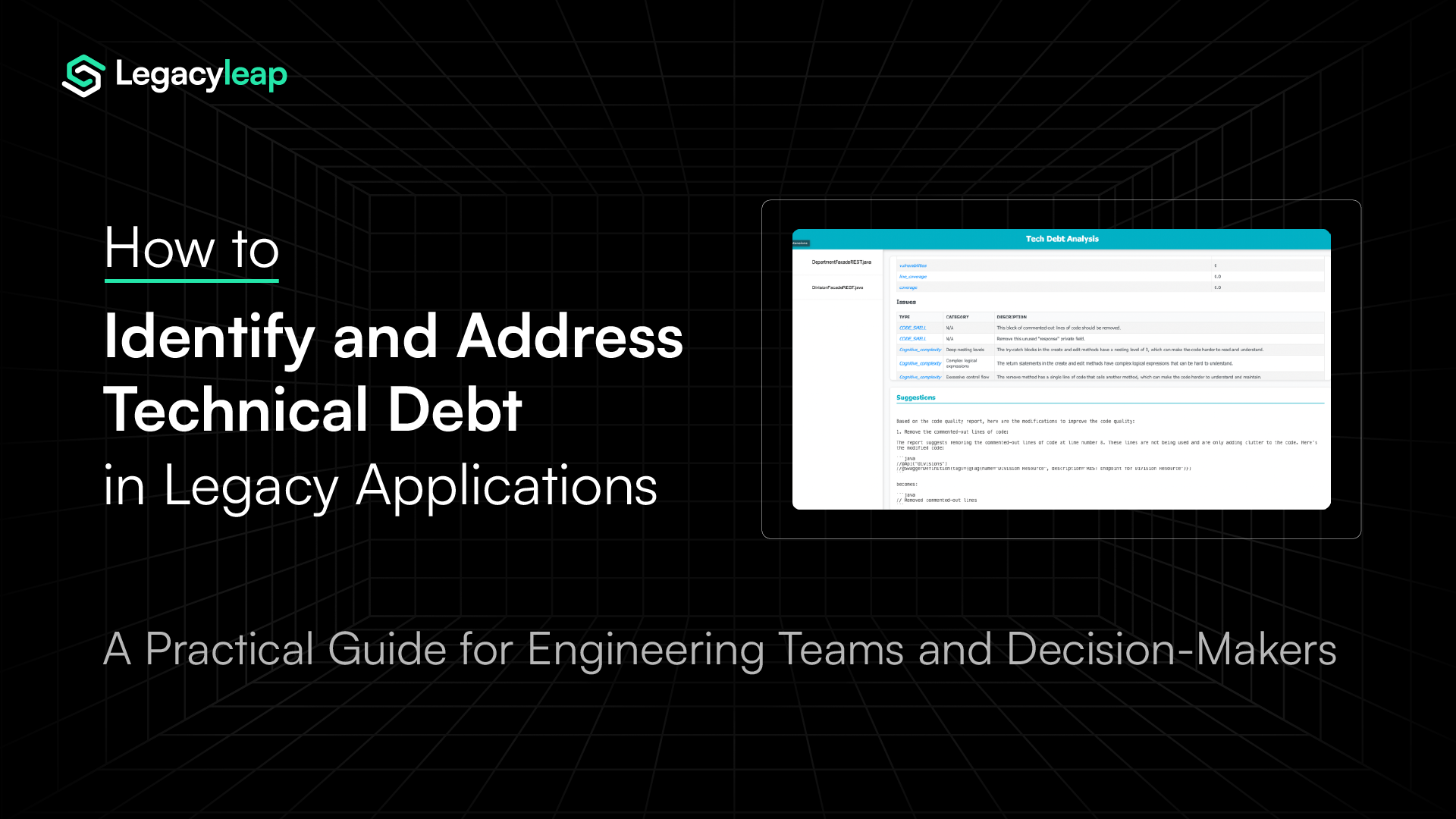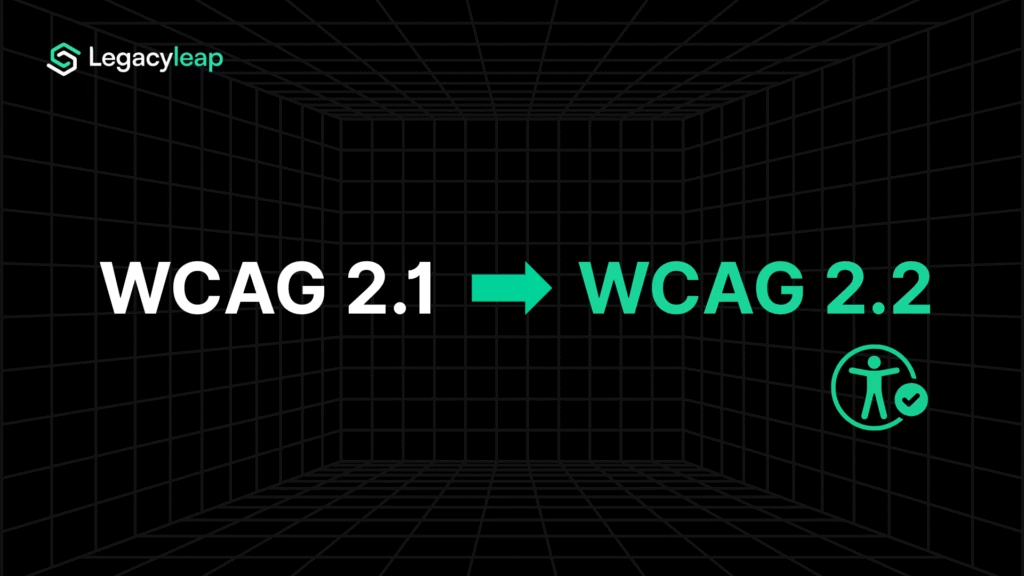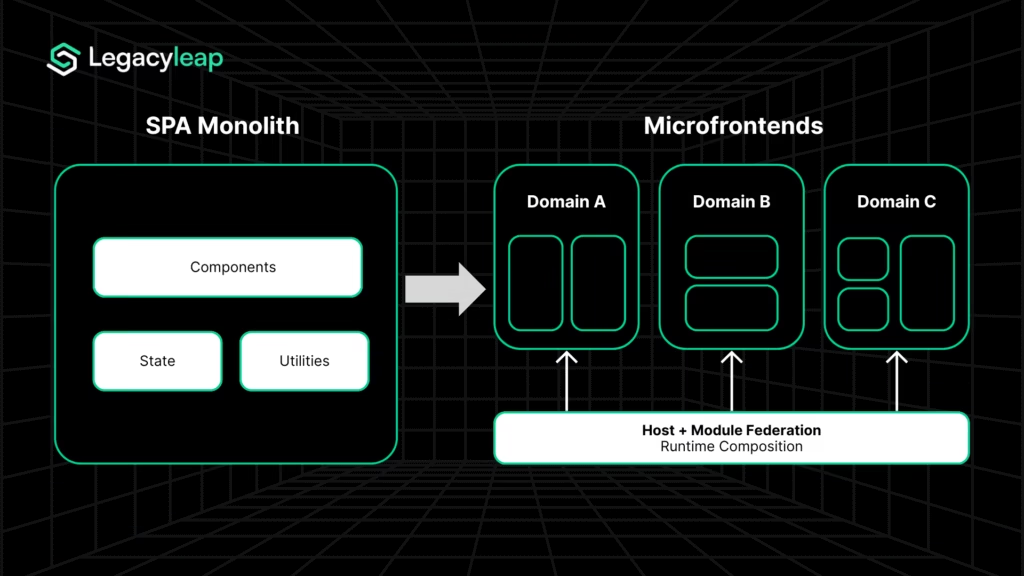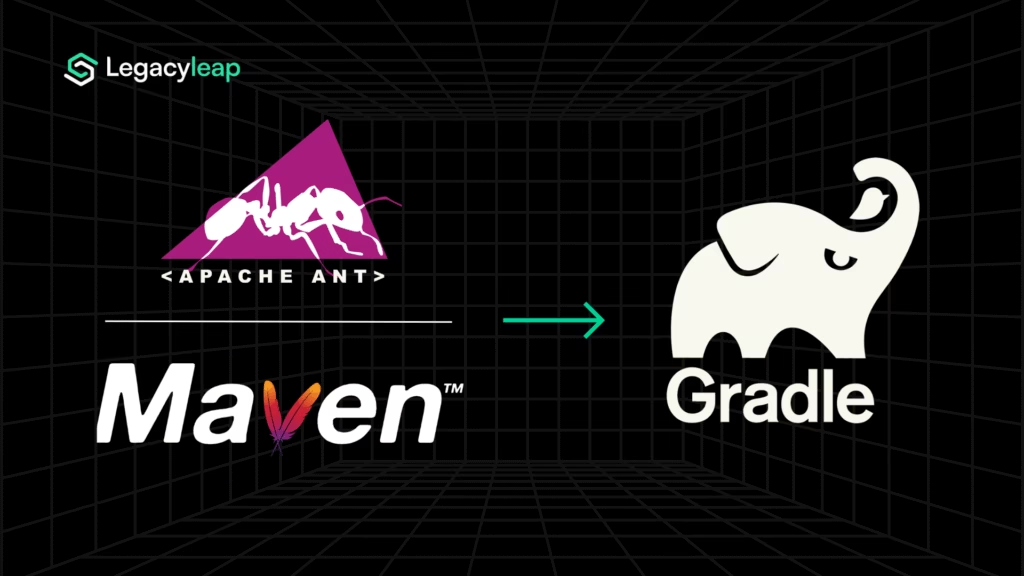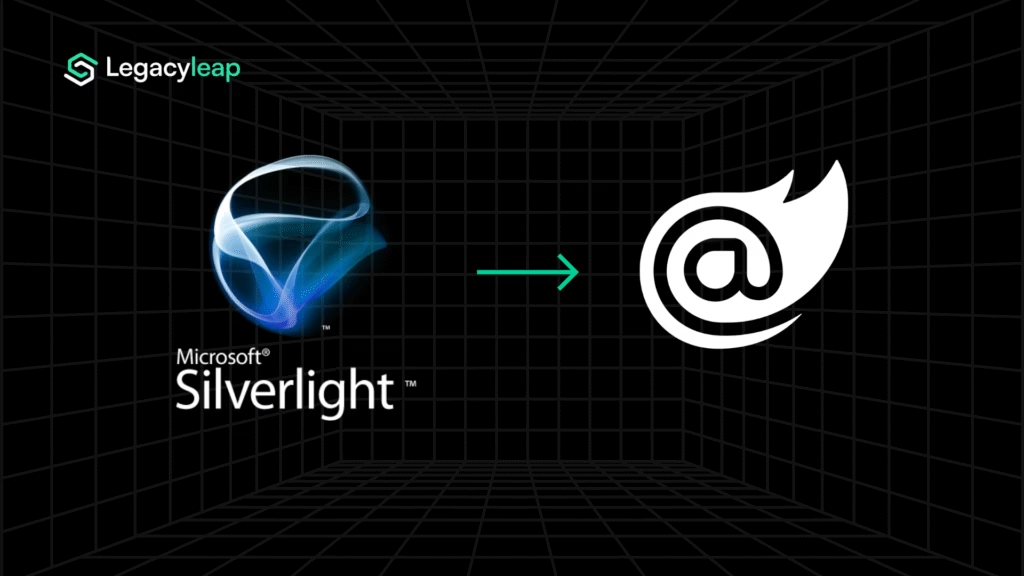Technical debt is both a developer inconvenience and a boardroom concern. For modern businesses, especially those saddled with legacy systems, technical debt acts like compound interest on past decisions: the longer it’s ignored, the more expensive and risky it becomes to address.
A McKinsey survey found that 30% of CIOs estimate that more than 20% of their budgets for new product development is quietly siphoned off to deal with technical debt, making up 20% to 40% of the total value of their tech estate. When maintenance and patchwork take priority over innovation, progress stalls.
Legacy applications often accumulate years of ad-hoc fixes, undocumented workarounds, and deferred upgrades. The result? Slower development cycles, rising security vulnerabilities, and ballooning infrastructure costs.
If you’re a decision-maker, you’ve likely heard developers mention it, but rarely in plain terms. Simply put, technical debt is the hidden cost of past shortcuts, and it compounds, just like financial debt.
In this blog, we’ll explore how to:
- Identify technical debt in legacy applications
- Prioritize and quantify its business impact
- Apply practical strategies to address it systematically
Let’s get right in.
Why technical debt is common in legacy applications
Think of technical debt like a credit card. Every shortcut in code creates a “loan,” and the interest compounds over time.
You repay it through extra work – fixing bugs, handling outages, and rewriting code when scaling. Delay the payoff too long, and the interest balloons – slowing releases, increasing defects, and eating into resources until innovation stalls.
Legacy systems and technical debt go hand in hand. Here’s why even the most critical business applications end up in a debt trap:
- Pressure to ship fast: Deadlines often force teams to prioritize delivery over design. Quick fixes become permanent, and technical shortcuts pile up.
- Changing business requirements: Systems designed for yesterday’s market rarely fit today’s needs. Features bolted on over time strain architectures beyond their limits.
- Skill attrition and documentation gaps: Developers leave, tribal knowledge fades, and with outdated or missing documentation, each new change invites more risk and inconsistency.
Technical debt doesn’t happen overnight. It accumulates with every short-term decision that skips long-term thinking.
Common types of technical debt
Technical debt isn’t one thing — it comes in flavors. Understanding the type helps you fix the root, not just the symptoms.
| Debt Type | What It Looks Like | Why It Happens | Long-Term Risk |
| Code Debt | Messy, duplicated, or fragile code. | Rushed releases, weak reviews. | High maintenance, frequent bugs. |
| Architectural Debt | Outdated or rigid system design. | Short-term thinking, scaling gaps. | Limits growth, slows new features. |
| Infrastructure Debt | Legacy servers, manual deployments. | Budget cuts, quick fixes. | Downtime, security exposure. |
| Documentation Debt | Missing or outdated technical docs. | Rushed handoffs, team churn. | Slows onboarding, raises risks. |
| Testing Debt | Sparse or missing test coverage. | Tight deadlines, low automation. | More bugs, unstable releases. |
Pro tip: This table is gold for non-technical leaders. It connects developer complaints to business risks clearly and quickly.
Signs you’re sitting on technical debt
You don’t need to read the source code to spot technical debt. It shows up in the way your team delivers.
- Slow or stalled release cycles.
- A growing bug list, even for small updates.
- Features take longer (and cost more) to ship.
- Frequent outages or unexplained performance dips.
- New developers take too long to ramp up.
Here are two examples from modernization projects we’ve handled, where debt wasn’t always labeled outright, but its symptoms were clear.
One global equipment leader had a business-critical application built on VB.NET. Over time, the architecture became overloaded with 1,700+ DLLs – a textbook example of technical debt. The tangled codebase slowed down every new release and made scaling the system a gamble.
By mapping dependencies and gradually modularizing the application, we helped move them toward Spring Boot-based services, reducing the drag of technical debt and unlocking future flexibility.
A fuel distribution software company faced a different kind of debt: a core product built in VB6 that had been growing for more than 30 years. The longer it lived, the harder it became to maintain, scale, and improve without breaking things.
Instead of rewriting everything from scratch, the company chose to modernize the system incrementally. With automated code transformation and testing handling about 70% of the heavy lifting, we guided the shift toward a modern .NET platform, cutting down technical debt tied to aging technology and making future changes less painful.
If this sounds familiar, you’re likely carrying more debt than your roadmap can handle.
How to identify technical debt in legacy systems
Technical debt isn’t always visible until it costs you. Use this simple radar to spot the most common red flags:
| Dimension | Typical Indicator |
| Code Complexity | Overcomplicated logic, repeated patterns. |
| Obsolete Dependencies | Old libraries, unsupported runtimes. |
| Architecture Drift | Hardcoded configs, brittle integrations. |
| Documentation Gaps | Missing, outdated, or unclear technical docs. |
| Security Gaps | Known vulnerabilities, legacy authentication. |
The earlier you detect these, the cheaper and safer your fixes will be.
Addressing Technical Debt: A Step-By-Step Approach
You can’t eliminate technical debt overnight, but you can tackle it systematically. Here’s how engineering teams and decision-makers should approach it:
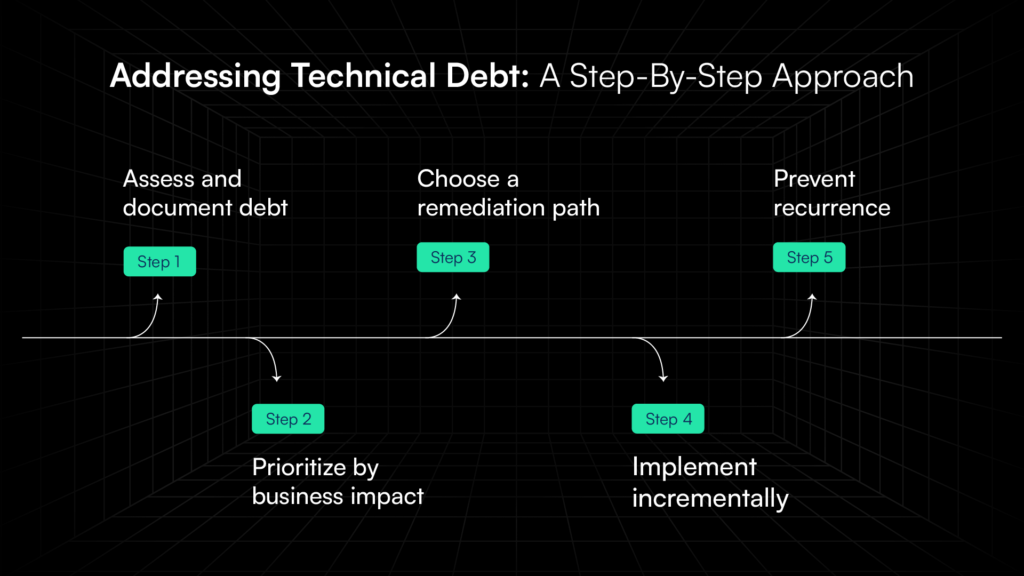
1. Assess and document debt
Start by mapping out where the debt lives:
- Codebases, architecture, infrastructure, dependencies.
- Log technical gaps and risks, not just surface symptoms.
You can’t fix what you can’t see.
2. Prioritize by business impact
Not all debt is equally dangerous. Focus on:
- Systems critical to uptime, revenue, or customer experience.
- Debt that blocks future growth (e.g., scalability or compliance risks).
Think risk-first, not convenience-first.
3. Choose a remediation path
Every debt problem fits into one of four routes:
- Refactor: Clean the code without changing functionality.
- Rewrite: Start fresh when the foundation is beyond repair.
- Replace: Swap outdated components with modern alternatives.
- Retire: Decommission systems that no longer deliver value.
Pick the path that balances technical risk and business reward.
4. Implement incrementally
Big-bang rewrites are tempting — and usually a mistake.
- Break remediation into smaller, testable stages.
- Deploy improvements alongside existing features where possible.
Small, steady changes reduce risk and improve visibility.
5. Prevent recurrence
Debt doesn’t just vanish. It sneaks back in unless you guard against it.
- Enforce code reviews and architectural oversight.
- Automate testing and documentation updates.
- Schedule debt reviews like you would feature planning.
A healthy system stays healthy through discipline, not luck.
Pitfalls to avoid when managing technical debt
Technical debt cleanup is about fixing habits, not just code. Without the right mindset, even well-meaning efforts fall flat. Watch out for these common traps:
- Patching symptoms, not root causes: Fixing visible bugs without addressing the underlying debt just buys you time and not much of it. Unless the structural flaws are resolved, the same issues will resurface.
- Letting deadlines override discipline: When business priorities push “just ship it” over “ship it right,” technical debt piles up faster than you can pay it down. A healthy engineering culture balances both.
- Treating debt reduction as a one-time task: Debt management isn’t a cleanup sprint. It’s a continuous practice. Systems evolve, and so does debt. Make review and refactoring part of your roadmap, not an afterthought.
Metrics for tracking technical debt reduction
You can’t manage what you can’t measure. Here’s how smart teams track their debt payoff:
- Defect density: Lower bug counts per feature or release indicate healthier, more maintainable code.
- Onboarding time: When new developers ramp up faster, it’s a clear sign that code, docs, and architecture have improved.
- Code complexity scores: Tools like SonarQube or CodeClimate can track cyclomatic complexity and duplication over time.
- Critical bug count: A declining number of severe bugs across releases shows that technical debt is no longer sabotaging stability.
Debt reduction isn’t always flashy, but these metrics prove the investment is paying off.
Strategic debt: When it’s actually okay
Not all technical debt is bad. Sometimes, it’s a deliberate trade-off to meet a business need.
Maybe you need to ship early to validate a product. Or meet a customer deadline to win a deal. Strategic debt buys speed today, but only if you plan to pay it back tomorrow.
The difference between smart debt and reckless debt is simple: Planned repayment.
Make it explicit. Make it scheduled. Make it non-negotiable.
How Legacyleap helps you slash technical debt
Technical debt isn’t always easy to spot or simple to fix. Here’s how Legacyleap helps engineering teams move from guesswork to action.
- Automated system assessment: Scan your codebase, infrastructure, and dependencies to flag debt hotspots, including those hidden behind aging architectures and undocumented logic.
- GenAI-powered code analysis and documentation generation: Automatically surface outdated patterns, duplicated logic, and missing documentation. This cuts manual audit time and reduces the risk of oversight.
- Refactor suggestions and phased modernization roadmaps: Get clear, context-aware recommendations on whether to refactor, rewrite, replace, or retire components, backed by system-wide impact analysis.
- Modern tooling for debt prevention: Adopt automated code reviews, CI/CD pipelines, and infrastructure-as-code setups to prevent technical debt from accumulating after remediation.
Technical debt is rarely one problem, and never one solution. Legacyleap gives you the system-level visibility and structured pathways to deal with both.
To learn more about how this works with Gen AI in the mix, check out our detailed read on Optimizing the Modernization Assessment Phase with Gen AI.
Wrapping up,
The longer technical debt sits unaddressed, the more it shapes your product roadmap, usually in ways you can’t see until it’s too late. The fix isn’t flashy. It’s methodical: uncover the debt, understand its root causes, and apply the right mix of refactoring, rewriting, or retiring.
But if you want to cut through the guesswork, start by seeing it in action. Pick one codebase, assess the debt, and map out the next steps without the overhead of committing to a full-scale project.
We’ll handle the first one, free.
Our GenAI-powered process will audit one codebase end-to-end: spotting hidden debt, generating clear documentation, and showing exactly how modernization moves from vague concern to concrete plan.

